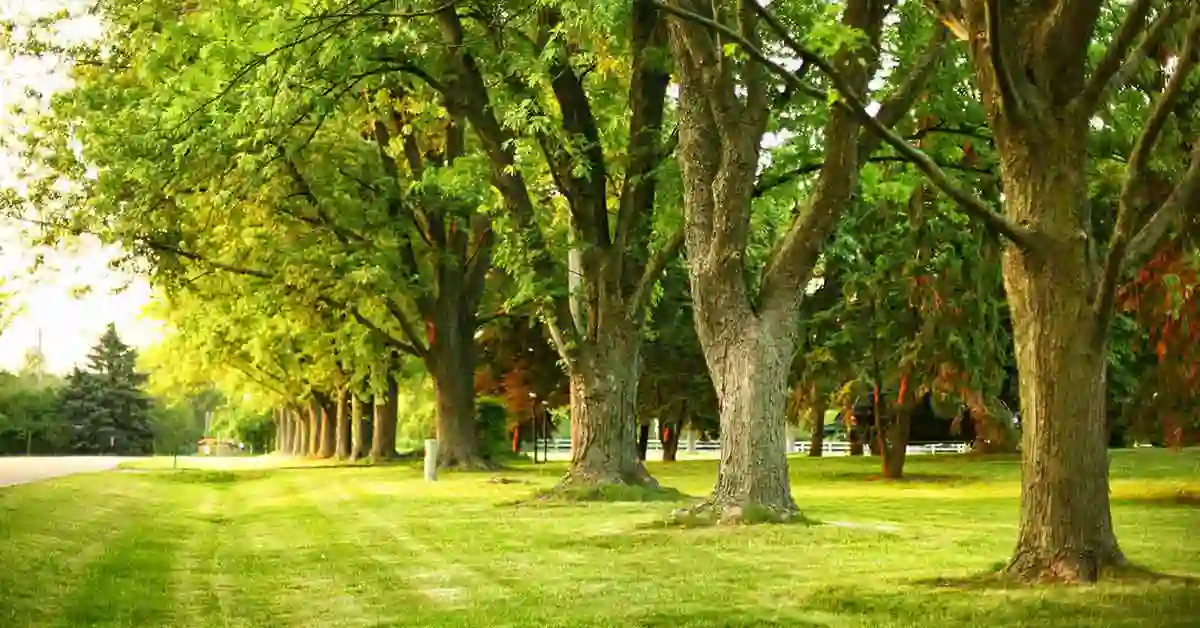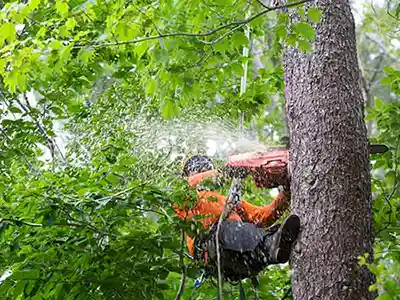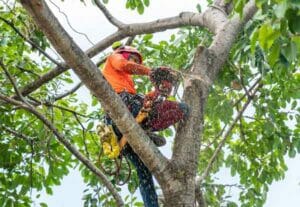
Table of Contents
- The Green Horizon: Understanding the Arborist Role
- Planting the Seed: Educational Pathway to Becoming an Arborist
- Scaling the Trunk: Obtaining Certifications
- Cultivating Growth: Continuous Professional Development
- The Arborist's Toolbox: Essential Skills and Qualities
- Charting the Course: Potential Career Paths for Arborists
- Basking in the Shade: The Rewards of Being an Arborist
- Unearthing the Roots: The History of Arboriculture
- Entwining with Technology: The Role of Modern Tools in Arboriculture
- Twigs and Branches: Exploring Different Tree Species
- Reading the Leaves: Understanding Tree Diseases and Pests
The Green Horizon: Understanding the Arborist Role
Arborists, often known as tree surgeons, are specialists in planting, caring for, and maintaining trees. Armed with an in-depth understanding of trees, they ensure our leafy friends' health and longevity.
Arborists are not merely tree-lovers. They are educated professionals who use their knowledge and skills to manage our urban forests. They provide expert care to trees and undertake essential tasks, such as tree pruning, pest management, tree planting and removal, and emergency tree care. It is very rewarding when they learn how to start a tree business

Planting the Seed: Educational Pathway to Becoming an Arborist
Arboriculture is a field that marries passion with knowledge. Here is how you can embark on your educational journey:
- High School Diploma: The journey on becoming an Arborist begins with a high school diploma or equivalent.
- Postsecondary Education: While not always required, an associate's or bachelor's degree in arboriculture, forestry, horticulture, or environmental science can provide a strong foundation.
- Practical Experience: Gaining hands-on experience is crucial. Many arborists start their careers by working for tree companies, landscaping firms, or local municipalities.
- Certifications: Earning a certification from an esteemed organization such as the International Society of Arboriculture (ISA) or the Tree Care Industry Association (TCIA) can open doors to advanced roles and opportunities.
Try our Arborist Software to help manage your business
Scaling the Trunk: Obtaining Certifications
Certification affirms your competence and commitment to the profession. Below are key certifications arborists often pursue:
International Society of Arboriculture (ISA) Certification
The ISA offers multiple certifications:
- ISA Certified Arborist: For individuals with at least three years of full-time experience in arboriculture.
- ISA Board Certified Master Arborist (BCMA): This is the highest level of certification offered by ISA, intended for arborists with extensive experience and a broad knowledge base.
- ISA Certified Arborist Utility Specialist: For arborists who manage vegetation near utility lines.
- ISA Certified Arborist Municipal Specialist: For arborists working in urban environments.
- ISA Certified Tree Worker Climber Specialist: For individuals with climbing skills and a minimum of 18 months of experience in aerial tree work.
Tree Care Industry Association (TCIA) Certification
TCIA also offers valuable certification programs:
- TCIA Accreditation: For businesses that adhere to stringent industry standards for quality and safety.
- Certified Tree Care Safety Professional (CTSP): For individuals committed to safe practices in the arboriculture industry.
Cultivating Growth: Continuous Professional Development
Professional development is a cornerstone of arboriculture. Arborists must stay updated with evolving knowledge and skills through training and continuing education.
Training Programs
Many organizations offer training programs for arborists. Examples include the ISA's "Tree Risk Assessment Qualification" (TRAQ) program and the TCIA's "Aerial Lift Specialist" program.
Conferences and Workshops
Conferences, seminars, and workshops provide platforms for learning and networking. Some notable ones include ISA's Annual International Conference and Trade Show and TCIA's Winter Management Conference.

The Arborist's Toolbox: Essential Skills and Qualities
Successful arborists possess a unique blend of skills and attributes:
- Physical Stamina: Arboriculture is a physically demanding profession that requires strength, balance, and agility.
- Problem-Solving: Arborists must analyze tree health issues and devise effective solutions.
- Communication: Conveying complex information to clients in a simple, understandable manner is essential.
- Attention to Detail: Arborists must observe subtle changes in trees' health and identify potential hazards.
- Love for the Outdoors: A natural affinity for nature and outdoor work fuels an arborist's daily activities.
Charting the Course: Potential Career Paths for Arborists
Beyond the basic role, the arboriculture field presents diverse career opportunities:
- Consulting Arborist: Consulting arborists offer expert advice on tree care, tree risk assessment, and best management practices.
- Utility Arborist: Utility arborists manage the vegetation near utility lines, ensuring reliable power supply and public safety.
- Municipal Arborist: Municipal arborists work for local governments, maintaining public parks and urban forests.
- Academic and Research Arborist: These arborists contribute to the field's knowledge by conducting research, teaching, and writing scholarly articles.
Basking in the Shade: The Rewards of Being an Arborist
Arboriculture is a fulfilling profession that not only nurtures your love for nature but also contributes to the greater good. As an arborist:
- You Become a Steward of the Environment: When you become an Arborist, you play a critical role in conserving the green cover, combating climate change, and making our world a better place.
- You Enjoy Outdoor Work: If you enjoy working in nature's lap away from the monotony of cubicle life, this profession is for you.
- You Engage in Lifelong Learning: The field of arboriculture is ever-evolving. There's always something new to learn and explore, keeping the job exciting and engaging.
- You Experience Job Satisfaction: There is immense satisfaction in witnessing a diseased tree regain health or a sapling mature into a towering tree under your care.
Unearthing the Roots: The History of Arboriculture
The origins of Arboriculture can be traced back centuries when humans first realized the importance of trees in their lives - for food, shelter, and other uses. Over time, the art and science of tree care evolved, leading to the birth of the arboriculture profession.
Modern Arboriculture came to the fore during the 18th century with significant developments in the understanding of tree biology, planting techniques, and tools. The profession has continued to evolve, keeping pace with advancements in technology and ecological understanding.
Just starting? Try our free Tree Estimate Template PDF
Entwining with Technology: The Role of Modern Tools in Arboriculture
In this digital age, arboriculture is not left behind. Arborists now utilize a range of modern tools and technologies to optimize their work:
- Tree Inventory Software: These systems allow arborists to record, manage, and analyze data related to tree populations. They aid in planning, budgeting, and executing tree management activities.
- Geographic Information System (GIS): GIS helps arborists map and analyze spatial data related to trees. It aids in urban planning, hazard assessment, and ecological research.
- Drones: Drones are becoming increasingly popular for tree inspections, enabling arborists to reach heights that may be unsafe or impractical to climb.
- Advanced Climbing Gear: Innovations in climbing gear have made tree climbing safer and more efficient for arborists.
Twigs and Branches: Exploring Different Tree Species
When you become an Arborist, you will encounter a diverse range of tree species. Here are some commonly dealt with trees and their unique characteristics:
- Oak (Quercus): Oaks are known for their strength, longevity, and acorn production. They can live for hundreds of years and provide valuable habitats for wildlife.
- Maple (Acer): Maples are loved for their brilliant fall colors and syrup production. They are also used widely in landscaping.
- Pine (Pinus): Pine trees are evergreens with needle-like leaves. They are commercially important for timber and resin.
- Willow (Salix): Known for their flexibility and fast growth, willows are often found near water bodies. Their bark is notable for its medicinal properties.
- Cherry (Prunus): Cherry trees are admired for their beautiful blossoms. They also produce cherries, which have culinary and medicinal uses.
Understanding the distinctive traits of different tree species allows arborists to provide specialized care.
Reading the Leaves: Understanding Tree Diseases and Pests
Arborists play a crucial role in diagnosing and managing tree diseases and pests. Common tree diseases include:
- Oak Wilt: This lethal disease affects oak trees and is caused by a fungus. It is characterized by wilting leaves and rapid tree death.
- Dutch Elm Disease: A fatal disease that affects elm trees, caused by a fungus spread by bark beetles.
- Apple Scab: A fungal disease that affects apple trees, leading to dark, scaly lesions on leaves, fruits, and twigs.
Common tree pests include Emerald Ash Borer, Gypsy Moth, and Asian Longhorned Beetle. A thorough knowledge of these diseases and pests equips arborists to protect our tree resources.
In conclusion, arboriculture is a complex and rewarding field that blends love for nature with science and skill. By following this comprehensive guide, you can embark on your journey to become a certified arborist and contribute to the health and preservation of our planet's vital green cover.
